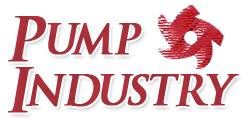Reciprocating Pumps

Reciprocating pumps are a type of positive displacement pump that use reciprocating motion to transfer fluids. These pumps operate by displacing a fixed volume of fluid with each stroke of a piston or plunger. Here are some key features and components of reciprocating pumps:
- Piston or Plunger: The reciprocating motion is generated by a piston or plunger, which moves back and forth within a cylinder. The piston or plunger creates a pressure differential that pushes the fluid through the pump.
- Cylinder: The cylinder provides a housing for the piston or plunger and helps contain the fluid being pumped. It is typically made of a durable material to withstand the pressures and forces involved.
- Inlet and Outlet Valves: Reciprocating pumps have one-way valves, known as inlet and outlet valves or check valves, that allow fluid to enter the cylinder during the suction stroke and exit during the discharge stroke. These valves ensure one-way flow and prevent backflow of the fluid.
- Crankshaft or Drive Mechanism: The reciprocating motion of the piston or plunger is typically driven by a crankshaft, connecting rod, or other drive mechanism. This converts rotary motion from a motor or engine into the reciprocating motion required by the pump.
- Sealing Mechanism: Reciprocating pumps require effective sealing to minimize leakage and maintain efficiency. Various sealing mechanisms, such as piston rings or packing seals, are used to create a tight seal between the piston or plunger and the cylinder.
- Stroke Length and Speed Control: The stroke length and speed of the reciprocating pump can be adjusted to control the flow rate and pressure. This is achieved by modifying the crankshaft or adjusting the stroke length through variable eccentric mechanisms.
Reciprocating pumps are known for their high-pressure capabilities and ability to handle a wide range of fluids, including viscous and abrasive liquids. They are commonly used in applications that require precise control over flow rates, such as hydraulic systems, oil and gas operations, high-pressure cleaning, and water injection in industries like agriculture, chemical processing, and power generation.
Reciprocating pumps offer advantages such as self-priming capabilities, the ability to handle variable flows and pressures, and suitability for high-pressure applications. However, they can also be more complex and require more maintenance compared to centrifugal pumps due to the reciprocating action and the presence of valves and seals.
Related Links
Multiple keywords
pumpmanufacturer, pump, aoddpump, aodd, aoddpumps


